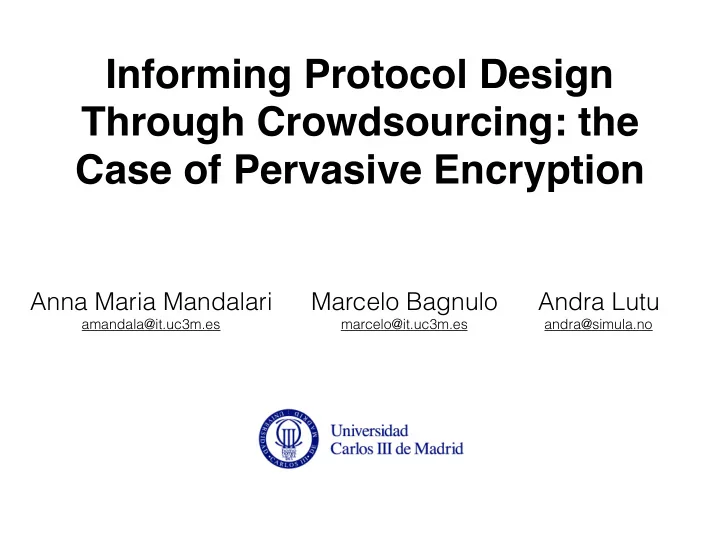

Informing Protocol Design Through Crowdsourcing: the Case of Pervasive Encryption Anna Maria Mandalari Marcelo Bagnulo Andra Lutu amandala@it.uc3m.es marcelo@it.uc3m.es andra@simula.no
Is the Internet Ossified? Today,many aspects appear to be “set in stone” Criticism: Middleboxes behavior How will Internet react to a new protocol? Handley, M. (2006). Why the Internet only just works. BT Technology Journal, 24(3), 119-129.
The case of pervasive encryption Understand the feasibility of pervasive encryption in the Internet. Understand the interaction of middleboxes with the TLS across the different TCP ports that currently use plain text protocols.
How to measure a thousand end-users? • Be Google (or any other large Internet players) or • Get your code to run on a thousand users’ machines through another delivery channel
Crowdsourcing platform Perform large-scale Internet measurement campaigns
Experimental setup: Measurement Agent Common Procedure • In the background, TLS connections over HTTP and HTTPS connections are 68 different ports performed from the measurement Measurement Server devices to our servers in all the 68 ports Measurement Agents
Aggregated results ERROR = (success [HTTP] − success [TLS]) 25% of the users are not able to perform a TLS connection over port 80 in mobile network.
Proxies ERROR = (success [HTTP] − success [TLS]) 70% of the users that use a proxy are not able to perform a TLS connection over port 80 in mobile network.
Conclusion • Overcome several of the limitations of the crowdsourcing platforms; • It is probably feasible to roll out TLS protection for most ports except for port 80, assuming a low failure rate (6%); • Our results can serve as a lower bound for the failure rate for using protocols other than expected in different ports.
Recommend
More recommend